 To enhance service speed and avoid tariff delays, we've opened a US warehouse. All US orders ship directly from our US facility.
To enhance service speed and avoid tariff delays, we've opened a US warehouse. All US orders ship directly from our US facility.
| Cat. No. | Product Name | Field of Application | Chemical Structure |
|---|---|---|---|
| DC11905 | Opiranserin Featured |
Opiranserin (VVZ-149, VVZ-000149) is a potent, selective, mixed glycine GlyT2 transporter blocker (IC50= 0.86 uM), purine P2X3 receptor antagonist (IC50=0.87 uM) and serotonin 5-HT2A receptor antagonist (IC50=1.3 uM).
More description
|

|
| DC24030 | LY451395 Featured |
A potent, selective, and centrally active positive allosteric modulator of AMPAR-mediated neurotransmission, which increase ion channel flux in the presence of agonist by suppressing desensitization and/or deactivation of the receptors..
More description
|
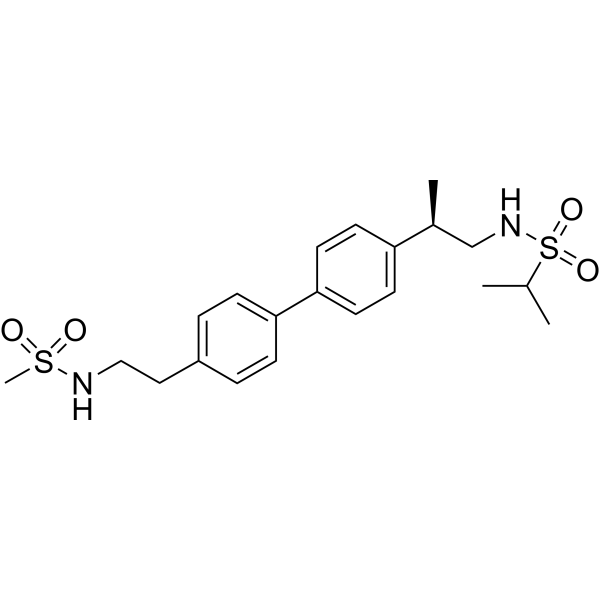
|
| DC22745 | SLx-4090 Featured |
A novel potent, selective and orally active enterocytic microsomal triglyceride transfer protein (MTP) inhibitor that inhibits only MTP localized to enterocytes with IC50 of 6 nM.
More description
|
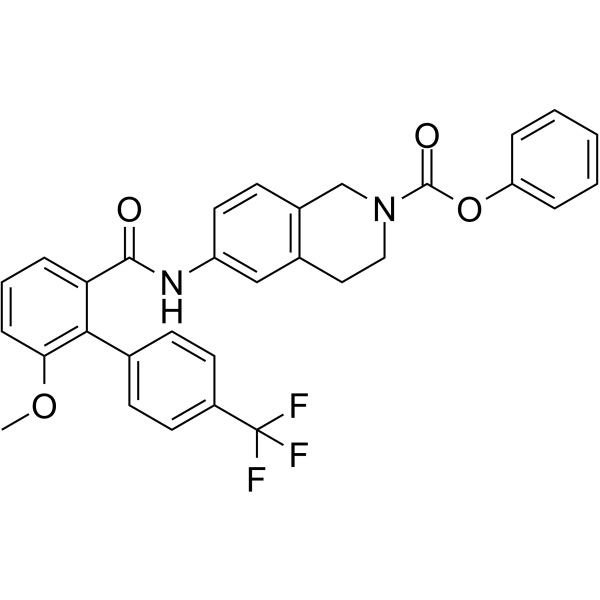
|
| DC7245 | SB 222200 Featured |
SB 222200 is a selective, reversible and competitive antagonist of human NK-3 receptor(Ki=4.4 nM) that effectively crosses the blood-brain barrier.
More description
|

|
| DC7554 | SGC-CBP30 Featured |
SGC-CBP30 is a potent CREBBP/EP300 inhibitor with IC50 of 21 nM and 38 nM, respectively.
More description
|

|
| DC49965 | CHD1Li 6.11 Featured |
CHD1Li 6.11 is a potent oncogenic CHD1L inhibitor (IC50=3.3 µM for cat-CHD1L recombinant protein). CHD1Li 6.11 is an orally bioavailable antitumor agent, significantly reducing the tumor volume of CRC xenografts generated from isolated quasi mesenchymal cells (M-phenotype), which possess enhanced tumorigenic properties.
More description
|
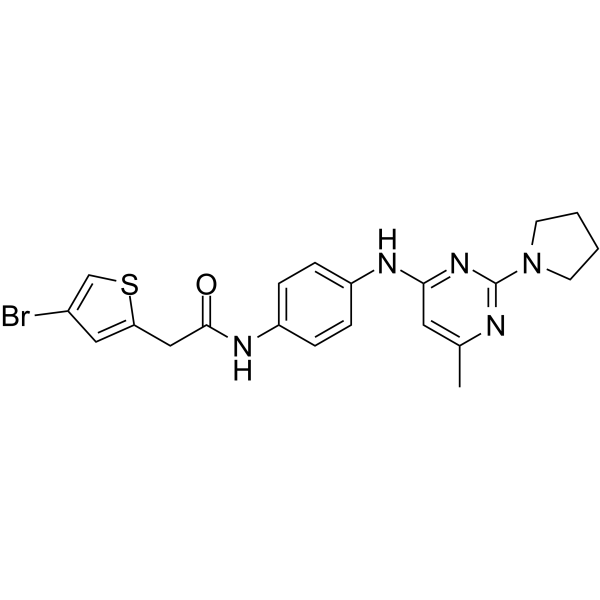
|
| DC26183 | BAY-1797 Featured |
BAY-1797 is a potent and selective P2X4 antagonist.
More description
|
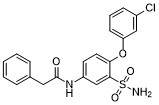
|
| DC73809 | ITE Featured |
A endogenous ligand, potent aryl hydrocarbon receptor (AhR) agonist in vitro.
More description
|

|
| DC43970 | NGB 2904 hydrochloride Featured |
NGB 2904 hydrochloride is a potent, selective, orally active and brain-penetrated antagonist of dopamine D3 receptor, with a Ki of 1.4 nM. NGB 2904 hydrochloride shows selectivity for D3 over D2, 5-HT2, α1, D4, D1 and D5 receptors (Kis=217, 223, 642, >500
More description
|

|
| DC33699 | K-756 Featured |
K-756 is a a selective Wnt/β-catenin pathway inhibitor. K-756 is also a tankyrase (TNKS) inhibitor. K-756 binds to the induced pocket of TNKS and inhibits its enzyme activity. could be a leading compound in the development of anticancer agents.
More description
|
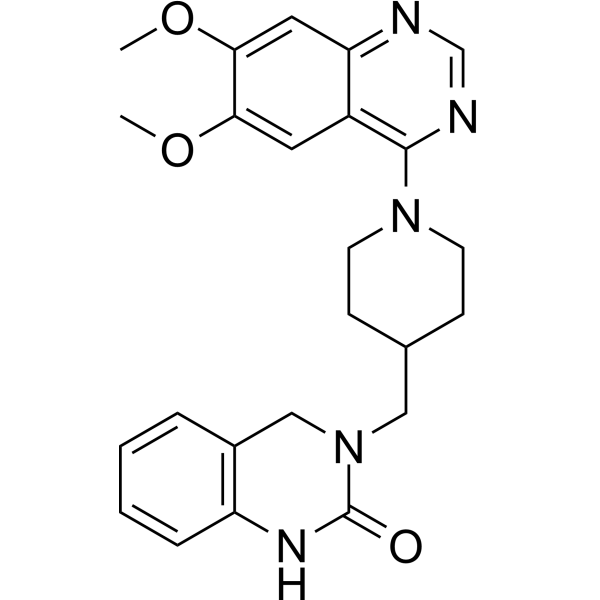
|
| DC44580 | Thioquinapiperifil dihydrochloride Featured |
Thioquinapiperifil dihydrochloride (KF31327), a potent, selective and non-competitive phosphodiesterase-5 (PDE-5, IC50 of 0.074 nM) inhibitor, is used for sexual enhancement study.
More description
|
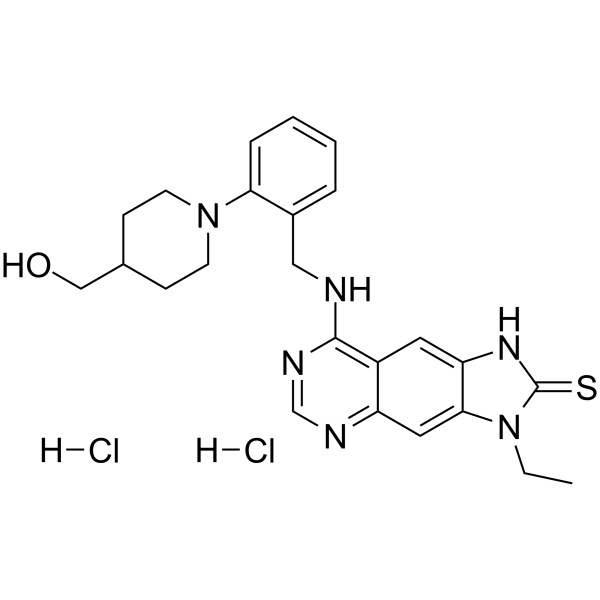
|
| DC45555 | SCR130 Featured |
SCR130 is a novel DNA repair inhibitor with IC50s of 14 μM in Reh cells and 2 μM in Nalm6 cells. SCR130 specifically inhibits DNA Ligase IV‐mediated joining with minimal or no effect on Ligase III and Ligase I mediated joining.
More description
|

|
| DC44751 | MLS-573151 Featured |
MLS-573151 (MLS000573151) is a selective GTPase Cdc42 inhibitor with an EC50 of 2 μM. MLS-573151 is inactive against other GTPases family members, such as Rab2, Rab7, H-Ras, Rac1, Rac 2 and RhoA wild-type. MLS-573151 acts by blocking the binding of GTP to
More description
|
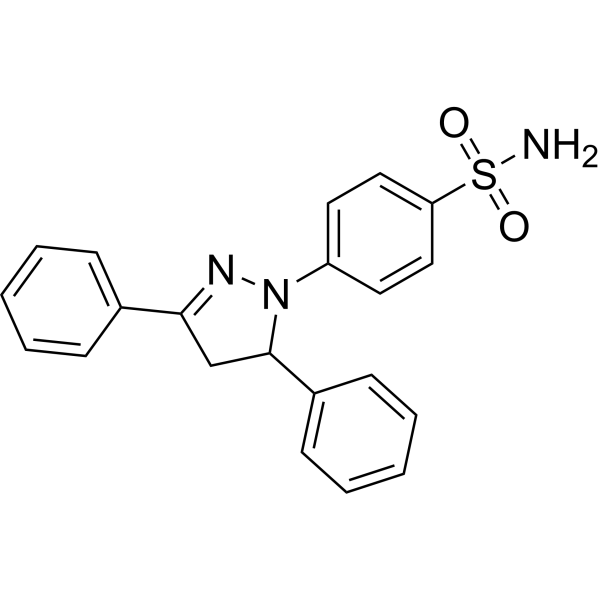
|
| DC47080 | Velufenacin Featured |
Velufenacin is a muscarinic receptor antagonist.
More description
|

|
| DC47062 | Bersacapavir Featured |
Bersacapavir is a novel Hepatitis B Virus capsid assembly modulator.
More description
|

|
| DC47069 | Ninerafaxstat Featured |
Ninerafaxstat hifts cellular metabolism from fatty acid oxidation to glucose oxidation.Ninerafaxstat decreases fatty acid oxidation and improve overall mitochondrial respiration.Ninerafaxstat inhibit the growth and proliferation of cancer cells.
More description
|
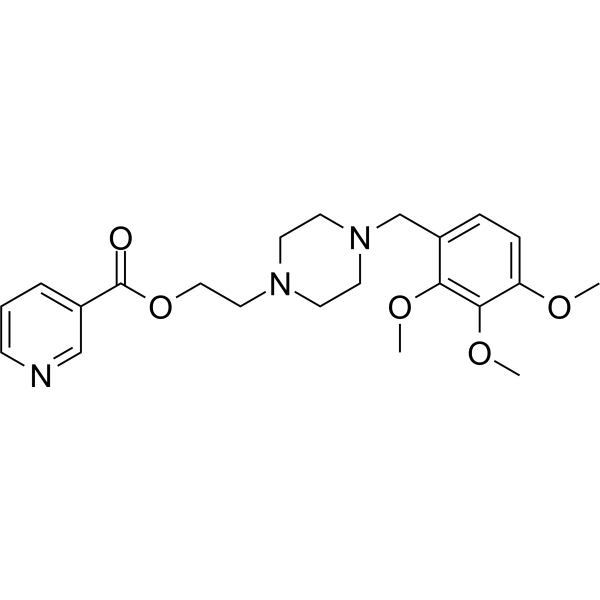
|
| DC47176 | GW 590735 Featured |
GW 590735 is a potent and selective PPARα agonist. GW 590735 showsEC50=4 nM on PPARα and at least 500-fold selectivity versus PPARδ and PPARγ. GW 590735 can be used for the research of dyslipidemia.
More description
|

|
| DC47635 | GLP-1R modulator L7-028 Featured |
GLP-1R modulator L7-028 is an allosteric modulator enhancing GLP-1 binding to GLP-1R via a transmembrane site (EC50 11.01 ± 2.73 μM).
More description
|

|
| DC47132 | JAK1-IN-8 Featured |
JAK1-IN-8, a potent JAK1 inhibitor (IC50<500 nM), compound 28, extracted from patent WO2016119700A1.
More description
|

|
| DC47591 | JAK-IN-14 Featured |
JAK-IN-14 is a potent and selective JAK1 inhibitor, with an IC50 of <5 μM. JAK-IN-14 is >8-fold more selective for JAK1 than JAK2 and JAK3 (Patent WO2016119700A1, compound 16).
More description
|

|
| DC10993 | RD162 Featured |
RD162 is a second-generation, orally available antiandrogen that binds to androgen receptor (AR) with IC50 of 30.9 nM.
More description
|

|
| DC47398 | MMV666810 Featured |
MMV666810, a 2-aminopyrazine similar to MMV390048, is potent against asexual parasites at 5.94 nM, but against gametocytes, it has a 3.3-fold selectivity to late-stage gametocytes compared to earlier stages (early-stage gametocyte: IC50 603 ± 88 nM; late-stage gametocyte: IC50 179 ± 8 nM).
More description
|

|
| DC47399 | MMV674850 Featured |
MMV674850 is potent against asexual stage parasites at 2.7 and 4.5 nM and preferentially targets early-stage gametocytes (early-stage gametocyte: IC50 4.5 ± 3.6 nM; late-stage gametocyte: IC50 28.7 ± 0.2 nM).
More description
|

|
| DC73603 | OV350 Featured |
OV350 (OV-350) is a potent, selective and direct K+-Cl- cotransporter KCC2 agonist with EC50 of 261.4 nM, with no effect on KCC2 plasma membrane accumulation and phosphorylation.
More description
|
.gif)
|
| DC67210 | FK960 Featured |
FK960 is a potential anti-dementia agent that reverses the reduction in cerebral blood flow (rCBF) caused by sensory stimulation by enhancing cholinergic neurotransmission. In macaque experiments, physostigmine (AChE inhibitor; HY-N6608) was able to completely eliminate the rCBF in the sensory cortex increased by vibrotactile stimulation. FK960 (1-1000 μg/kg) can restore the eliminated rCBF response, and the action time can last for 1 hour. However, FK960 cannot restore the rCBF response eliminated by HA-966 (NMDA modulator; HY-100822), indicating that its function is not dependent on non-glutamatergic neurotransmission.
More description
|
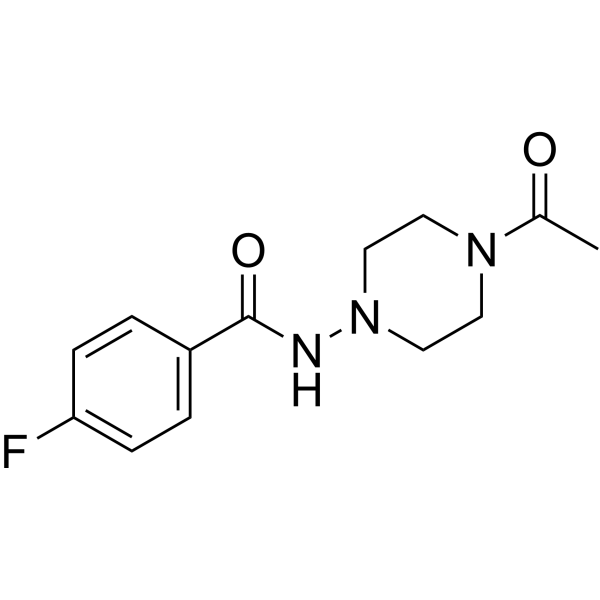
|
| DC31161 | AP24534 hydrochloride Featured |
Ponatinib, also known as AP24534 is an oral drug for the treatment of chronic myeloid leukemia (CML) and Philadelphia chromosome–positive (Ph+) acute lymphoblastic leukemia (ALL). It is a multi-targeted tyrosine-kinase inhibitor. Some forms of CML, those that have the T315I mutation, are resistant to current therapies such as imatinib. Ponatinib has been designed to be effective against these types of tumors. Ponatinib was approved in 2012.
More description
|
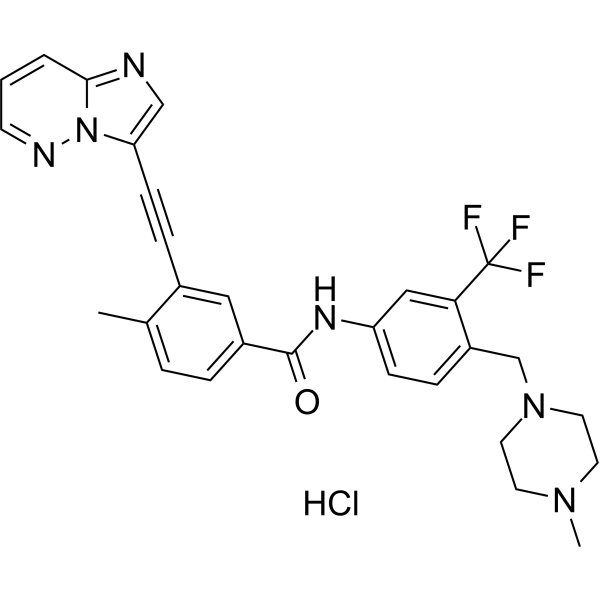
|
| DC7456 | LX1606 Hippurate Featured |
LX1606 is an orally bioavailable, small-molecule, tryptophan hydroxylase (TPH) inhibitor with potential antiserotonergic activity.
More description
|

|
| DCC0466 | Adamts-5 Inhibitor Featured |
Selective inhibitor of ADAMTS-5 (A disintegrin and metalloproteinase with thrombospondin motifs 5 or aggrecanase-2)
More description
|
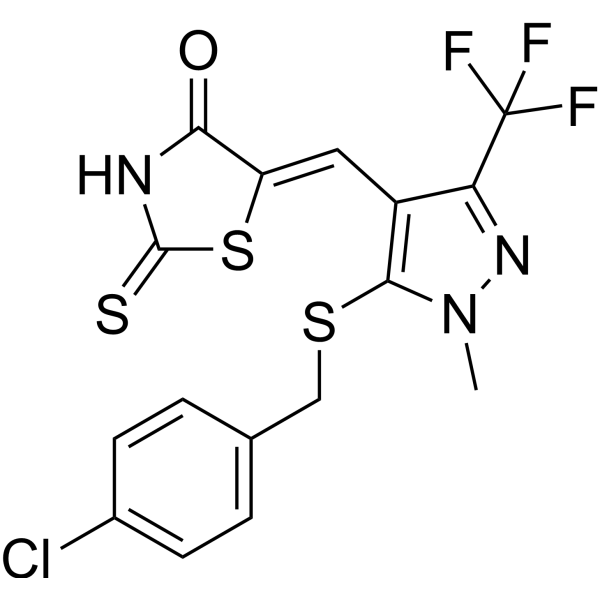
|
| DC72485 | HBC620 Featured |
HBC620 is an analogue of HBC which is a GFP fluorophore-like synthetic dye that is nonfluorescent in solution, but strongly fluoresces upon forming tight complex with Pepper RNA aptamer. HBC-Pepper complex can be used to visualize RNA dynamics in live cells.
More description
|

|
| DC22146 | MGV354 Featured |
MGV354 is a novel potent, selective soluble Guanylate Cyclase (sGC) activator, lowers intraocular pressure (IOP) in preclinical models of glaucoma..
More description
|

|